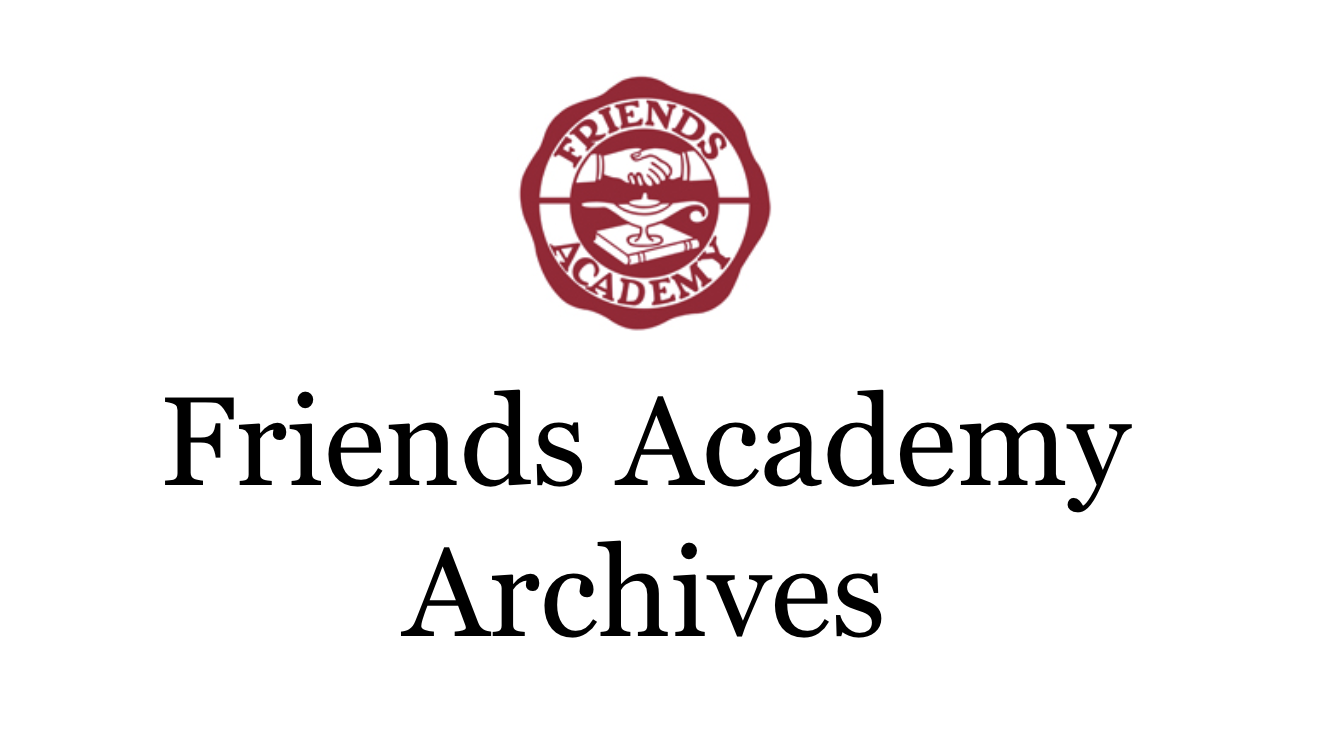A Brief History of the Matinecock Meeting House
Early Years
In the 1660s, English settlers began to inhabit the area around Friends Academy. They had been allowed to do so by the Town of Hempstead only under the condition that they not “bring in any Quakers to be inhabitants among us.” Naturally, Quakers were some of the first to arrive.
Gideon Frost’s ancestors were among Matinecock’s earliest English residents. Gideon’s great-great-grandparent William Frost first moved to Boston in 1655 and came to Long Island sometime around 1667. William Frost’s arrival coincided with a rise in Quakers on Long Island although it is not clear whether he ever became a Quaker. At the time, Quakers met outdoors or in each other’s homes to avoid persecution.
George Fox, the founder of Quakerism, preached in Oyster Bay in 1672. Several decades later, the Quaker missionary Thomas Chalkley visited Glen Cove. He wrote the following about his visit to Oyster Bay:
[We] had a meeting there on third-day, which was large, and to general satisfaction, and some were there that were newly convinced. I seeing the openness of the meeting, advised Friends to build a meeting-house there, which they approved of.
This Meeting House is the Matinecock Meeting House located across the street from Friends Academy. Gideon Frost belonged to this meeting, and our students still gather there once a week.
Matinecock Meeting House
Matinecock Meeting House is on a hill of about 1.5 acres. The grey color matches Quaker ideals of simplicity. A graveyard, acquired in 1725, is located across the street from the Meeting House. The only decoration inside the Meeting House is a curve in the octagonal columns supporting the balcony. The glass panels on windows are small due to the prohibitive cost of glass when the Meeting House was built. The large shed next to the Meeting House was for the horses and buggies of an earlier era.
Men and women traditionally sat on opposite sides. Women sat on the eastern side, while men sat on the western side. Within the center of the building is a divider. This divider was only used during men’s Business Meetings and women’s Business Meetings. No decision could be reached unless both groups reached a consensus. This practice stands in accordance with Quaker beliefs about equality. The dividers were used until October 10, 1886.
Matinecock Meeting House did not have a stove until 1784. Until this time, members brought their own footstoves to keep warm. Later, two chimneys and wood-burning stoves were added. These chimneys begin at the second floor. This placement allowed for energy conservation: the pipes that run from the stove emitted heat instead of losing the heat to a chimney. The type of stove that is in the Meeting House now is post-Civil War. The walkway on the north wall was for designated male and female members to oversee and ensure that Quaker process was followed properly.
Gideon Frost
Gideon Frost sat along the facing bench. Later in life, he would contribute ten percent of the Meeting’s operating costs and supported a restoration project in 1870. He also funded the work of local historian Henry Onderdonk, Jr. who wrote a manuscript called “Friends on Long Island and New York.” Sometimes, Frost’s beliefs put him at odds with even his fellow Quakers. He was an ardent pacifist and objected to the Civil War on the grounds that war is against Quaker principles. Instead, he advocated pursuing the peaceful abolition of slavery by other means. His interest in science and conviction in the power of scientific inquiry led him to publish a treatise in 1869 entitled A New Exposition of the Leading Facts of Geology: Including a Disquisition upon the Origin and Formation of Petroleum and Coal. Within this treatise, Frost criticizes religious objections relating to discoveries surrounding the proposed age of the universe on the grounds that the Genesis was intended as an allegorical, non-literal account of creation.
Fire and Reconstruction of the Matinecock Meeting House
On Dec. 5th, 1985, the Matinecock Meeting House was destroyed in an electrical fire. Of the building, only the southern wall remained standing along with a portion of the eastern wall. It was reported that two objects were found: a page from a book on the history of Judaism with a verse visible reading “rebuild the Temple” and a print of the Matinecock Meeting House that was burned at the edges but otherwise untouched.
The charitable response from the community was overwhelming. The local community banded together to fund the reconstruction of the Meeting House. This reconstruction process took ten months. On November 30th, 1986, members of the Matinecock Meeting met to worship together in the reconstructed Meeting House. The foundation of the reconstructed building rests upon the original foundation with a steel support system underneath. The wood-burning stove that remains is one of the original post-Civil War stoves. The chimneys’ bricks were reused and supported with steel braces covered in original chestnut beams. All glass windows are antique, some donated with the rest of it acquired in Connecticut. Nails and lumber were reused from the old Meeting House. The floorboards were salvaged from the fire and flipped upside down when rebuilding the floor. Modern plumbing and central heating systems were installed along with sprinklers to prevent future fires. A time capsule hidden within the Meeting House contains the signatures of those who helped make this reconstruction happen along with memorabilia related to the reconstruction.
